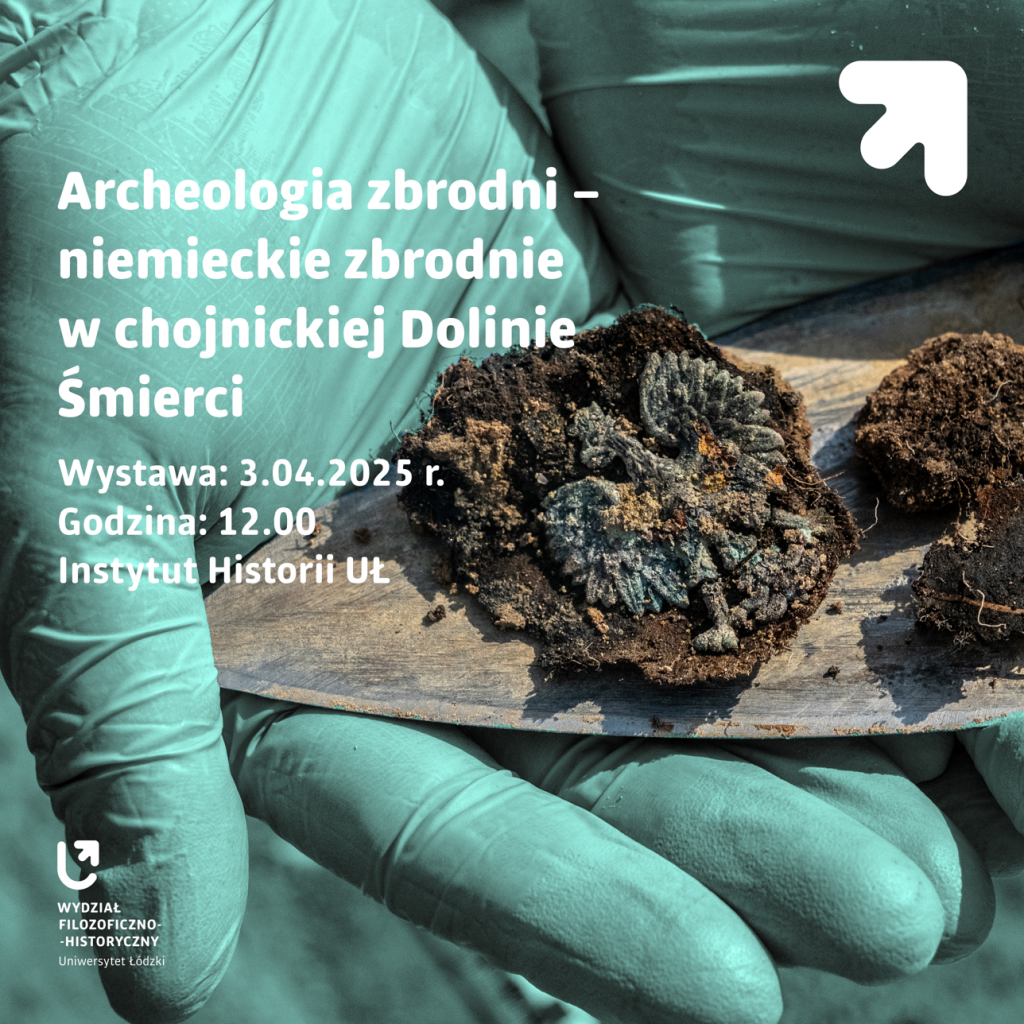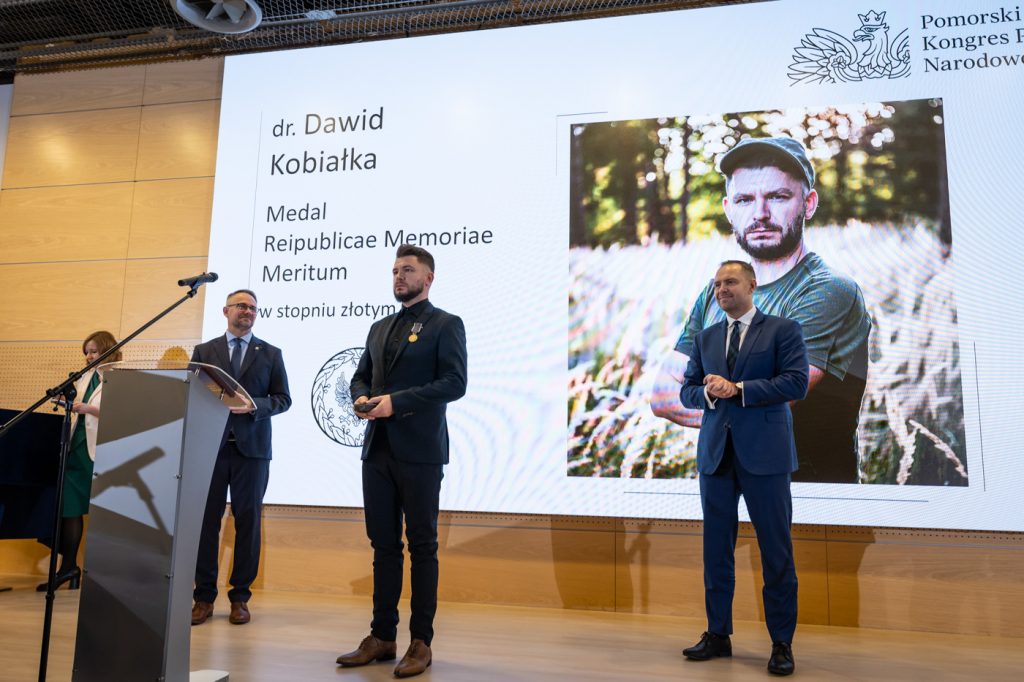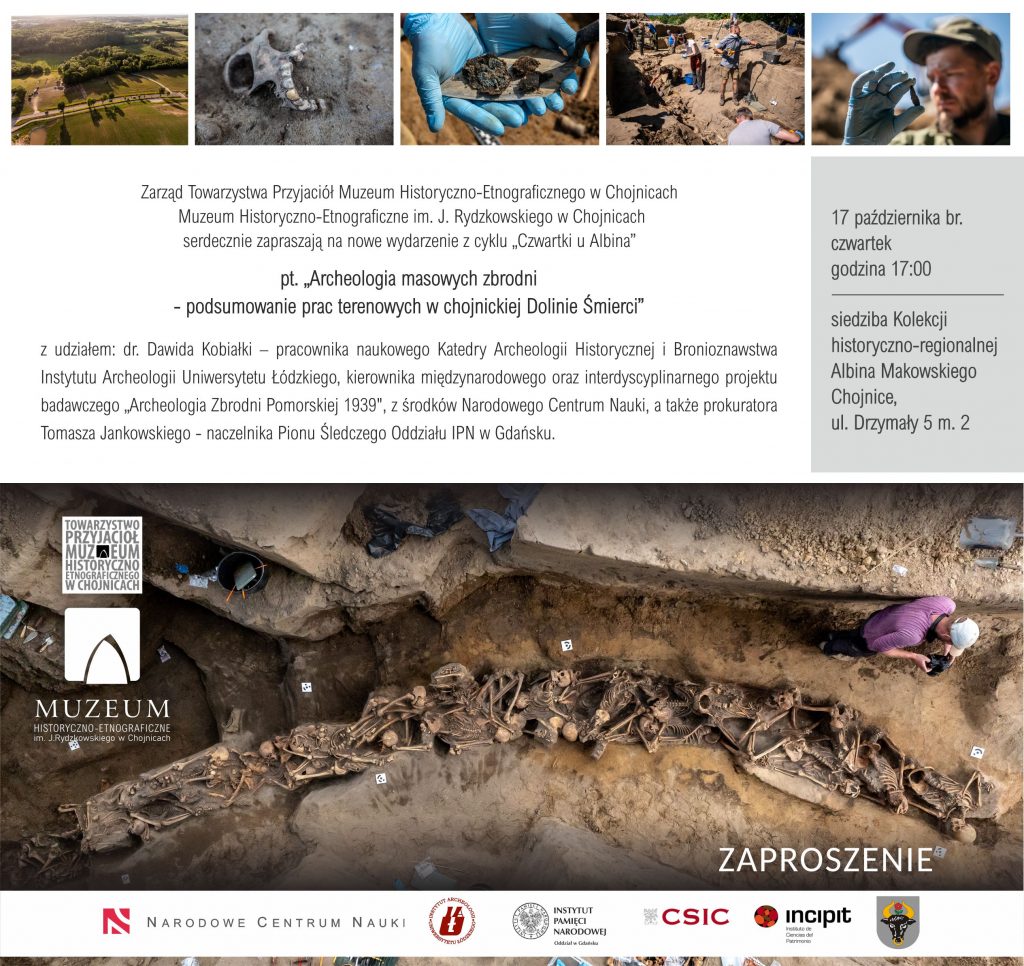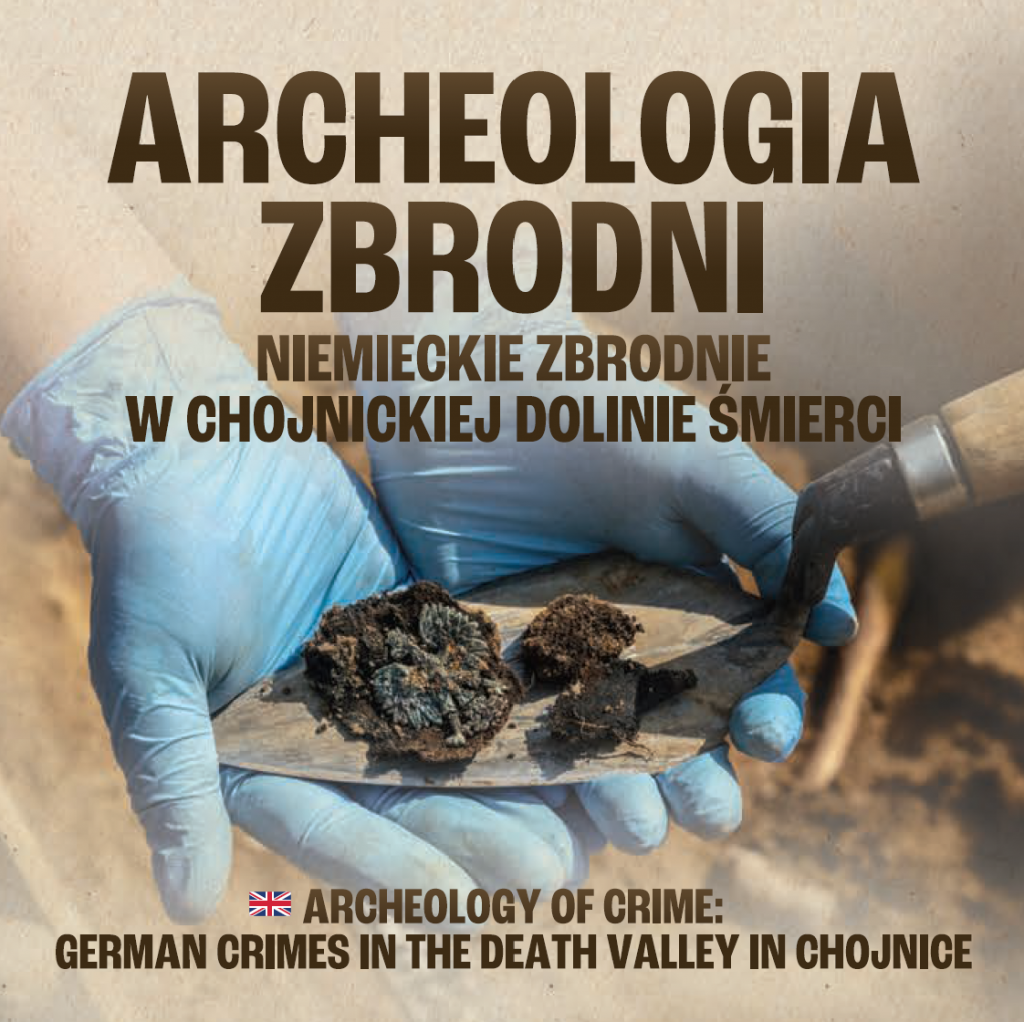
The Archaeology of Mass Crimes. Nazi Extermination in Gdańsk Pomerania, Poland



Dr Dawid Kobiałka został nagrodzony złotym medalem za swoją działalność naukową i zaangażowanie w odkrywanie trudnej przeszłości Pomorza. Kierując badaniami w Chojnickiej Dolinie Śmierci, wspólnie z Instytutem Pamięci Narodowej przyczynił się do ekshumacji oraz godnego pochówku 700 ofiar niemieckich zbrodni wojennych. Jego praca była kluczowa dla upamiętnienia tych tragicznych wydarzeń, a jednocześnie poszerzyła wiedzę o zbrodniach popełnionych na Pomorzu w czasie II wojny światowej.



Książka w formacie pdf jest do pobrania tutaj.